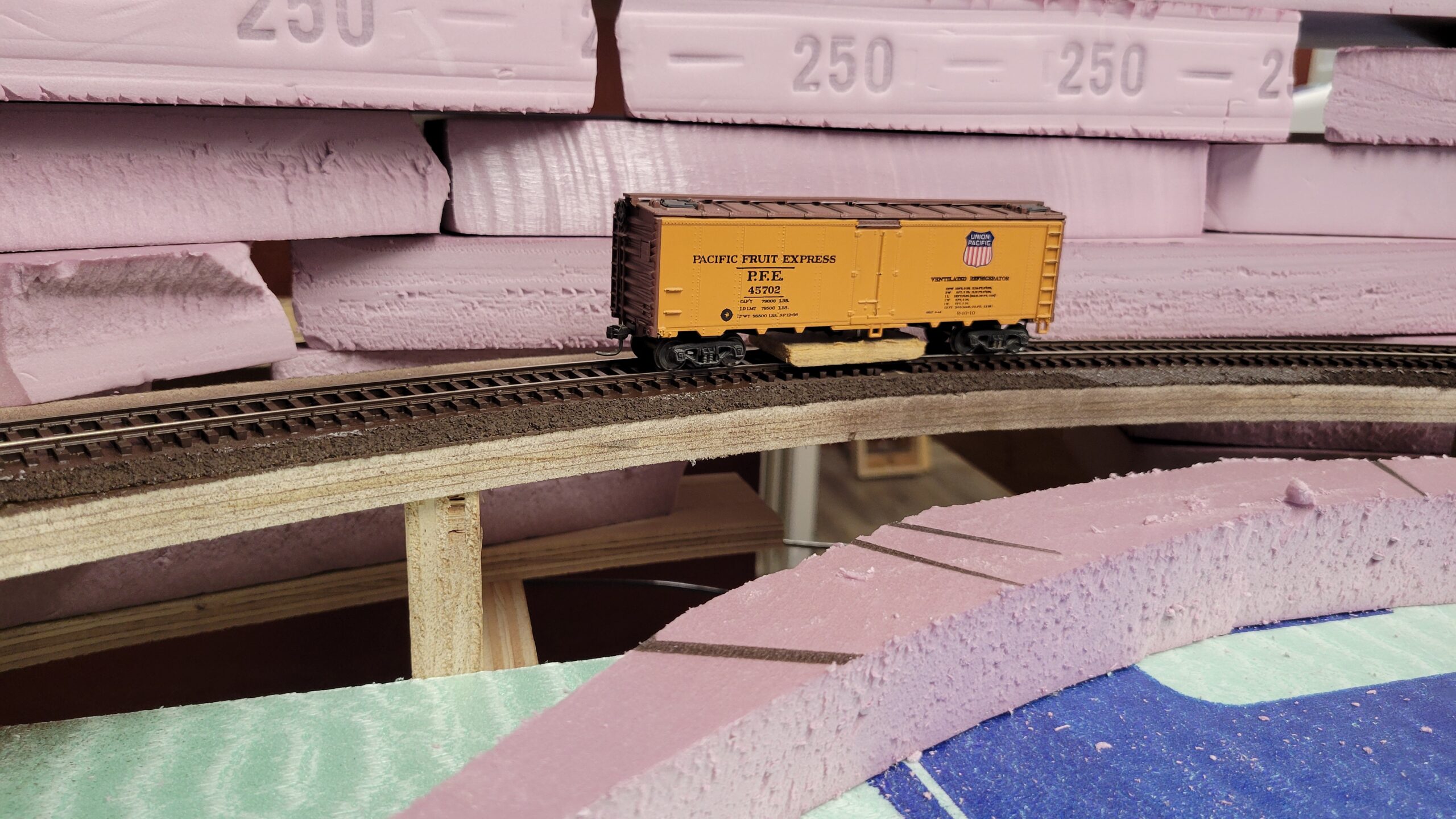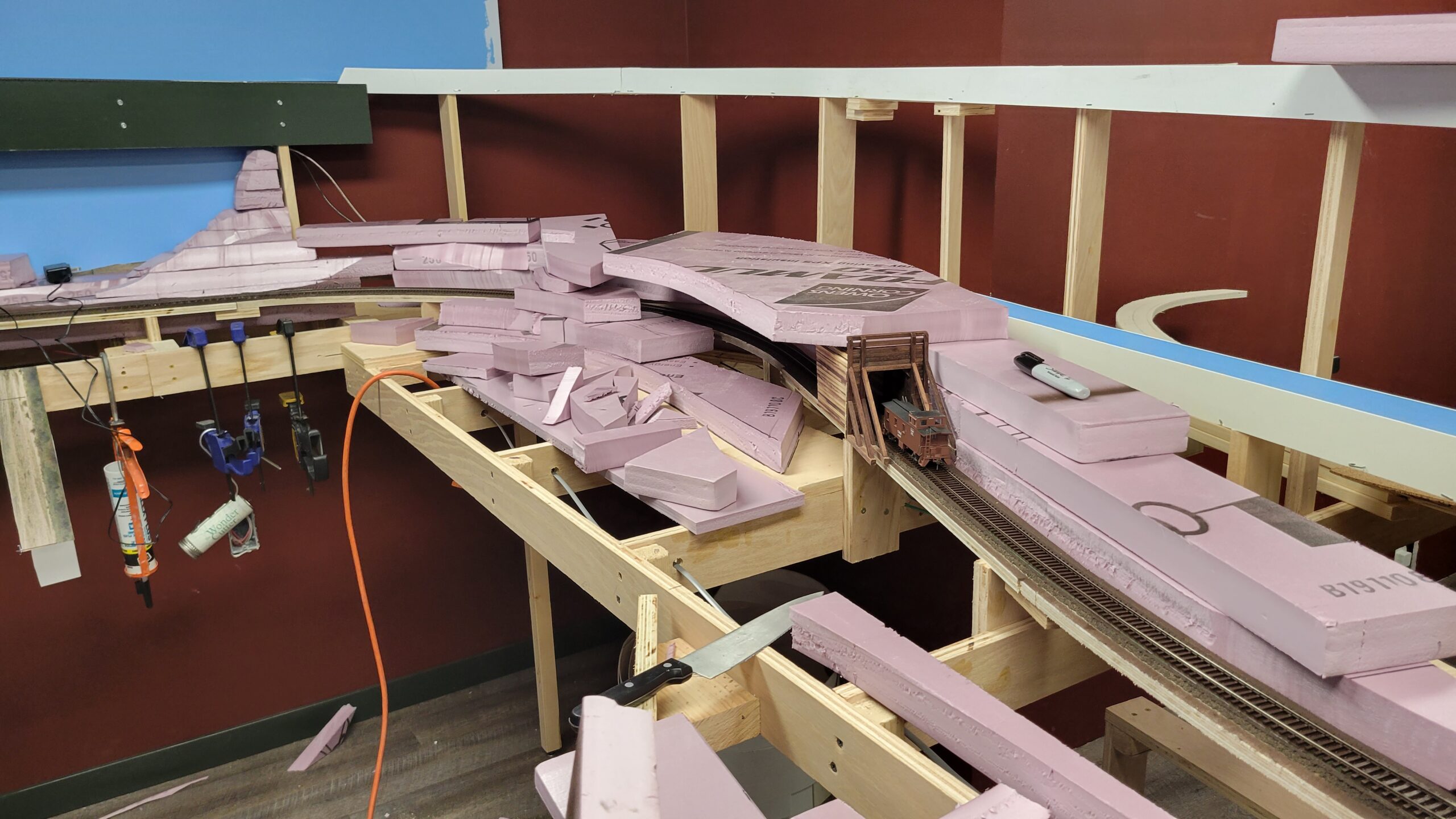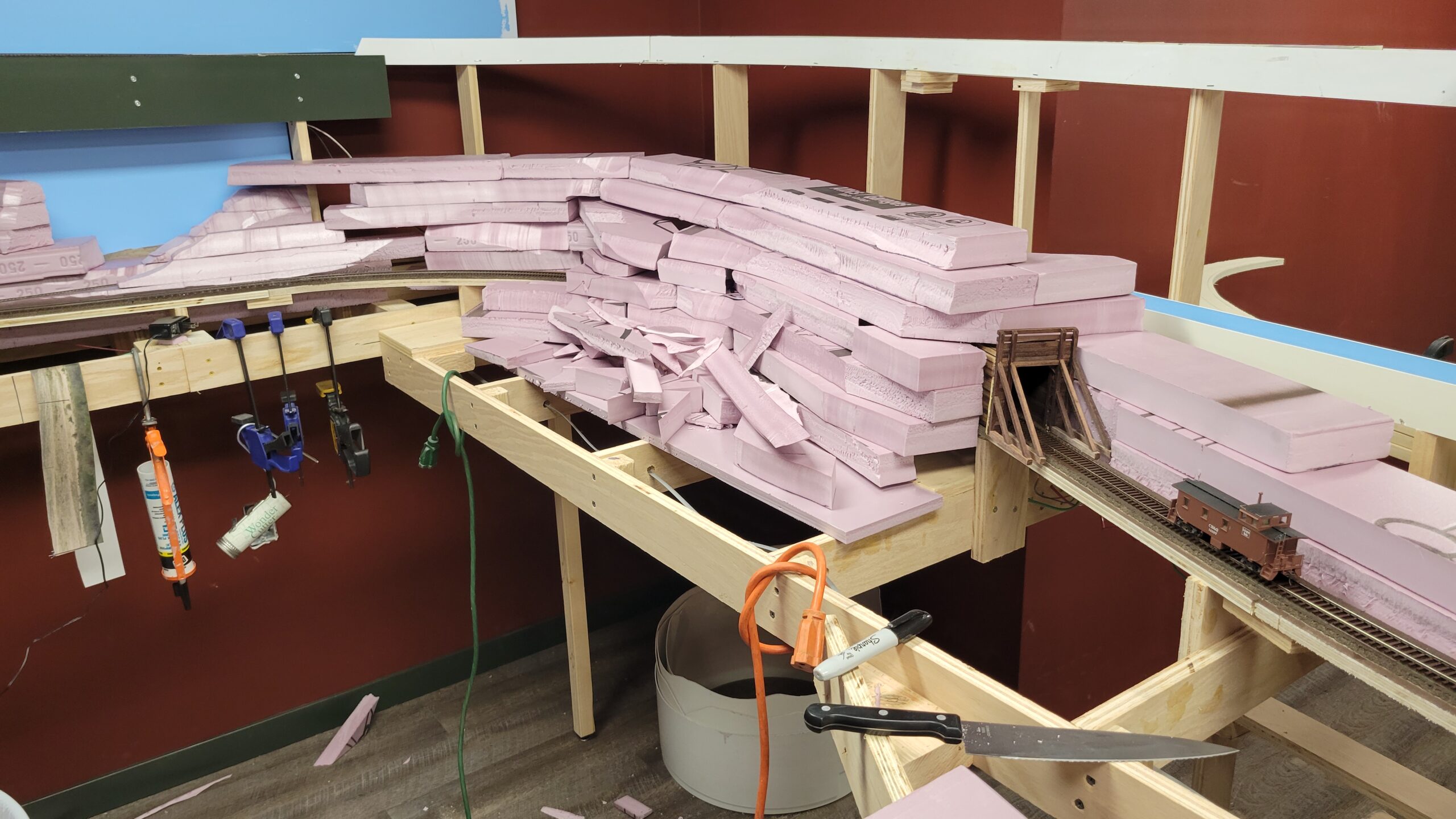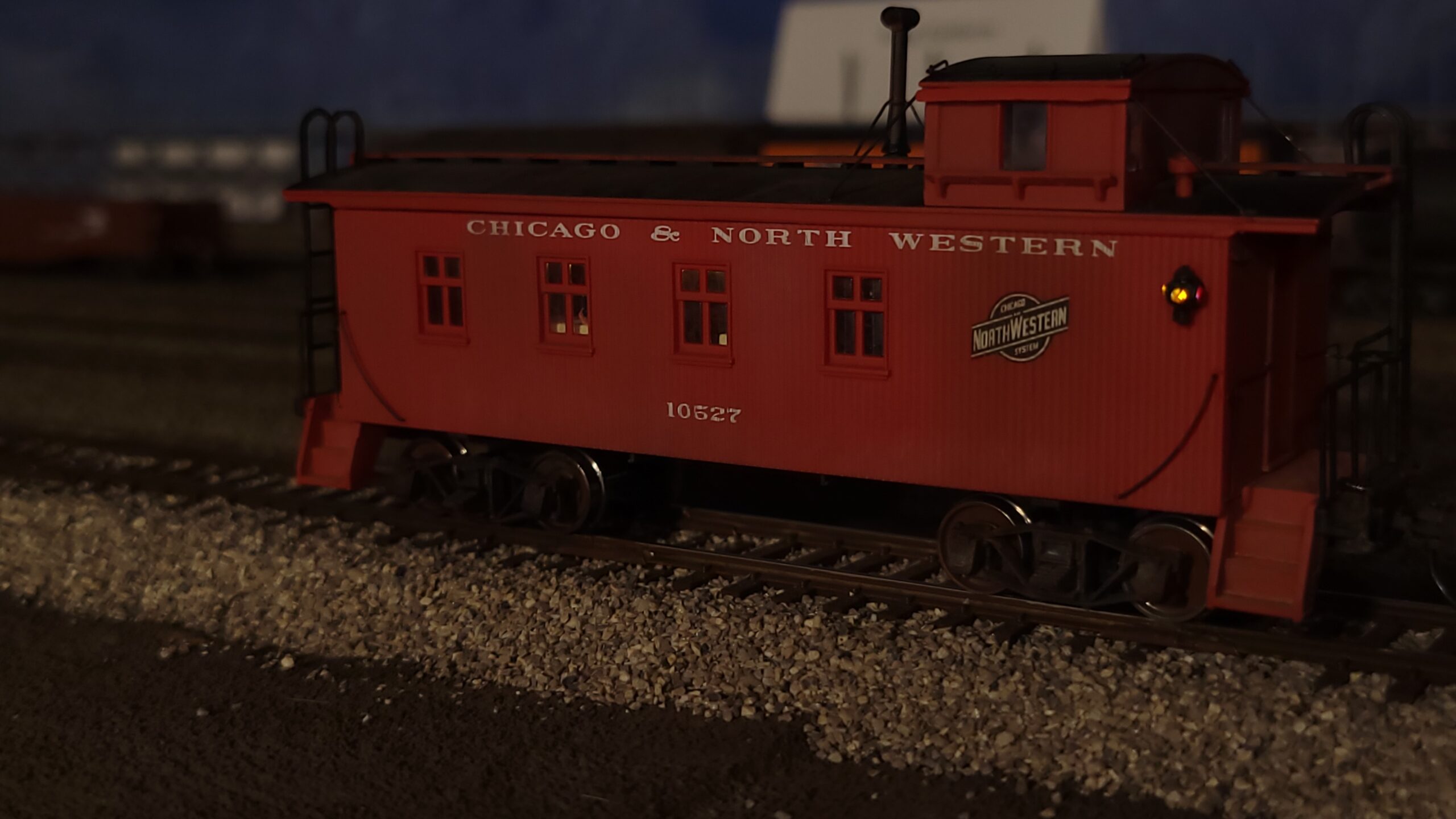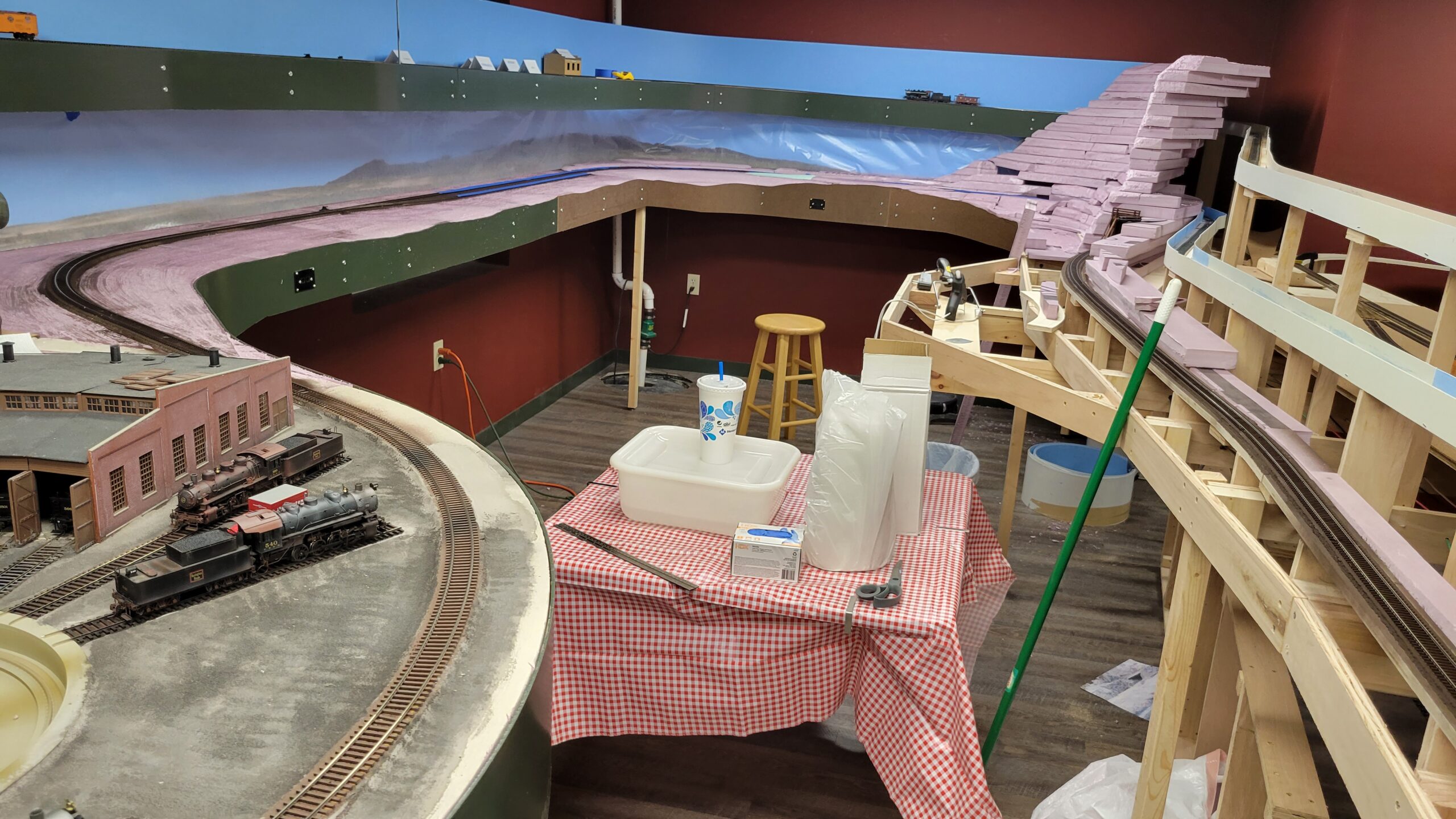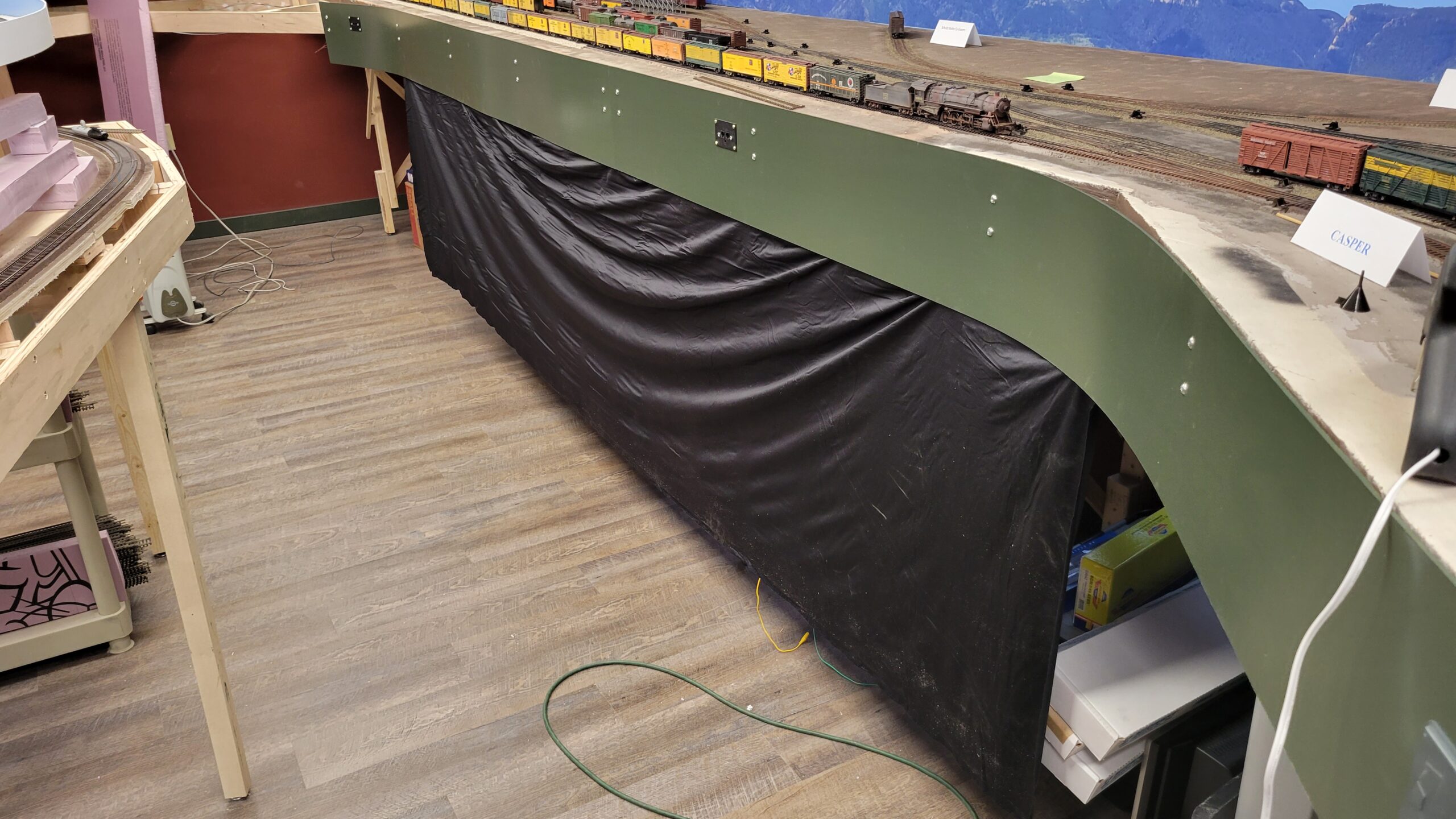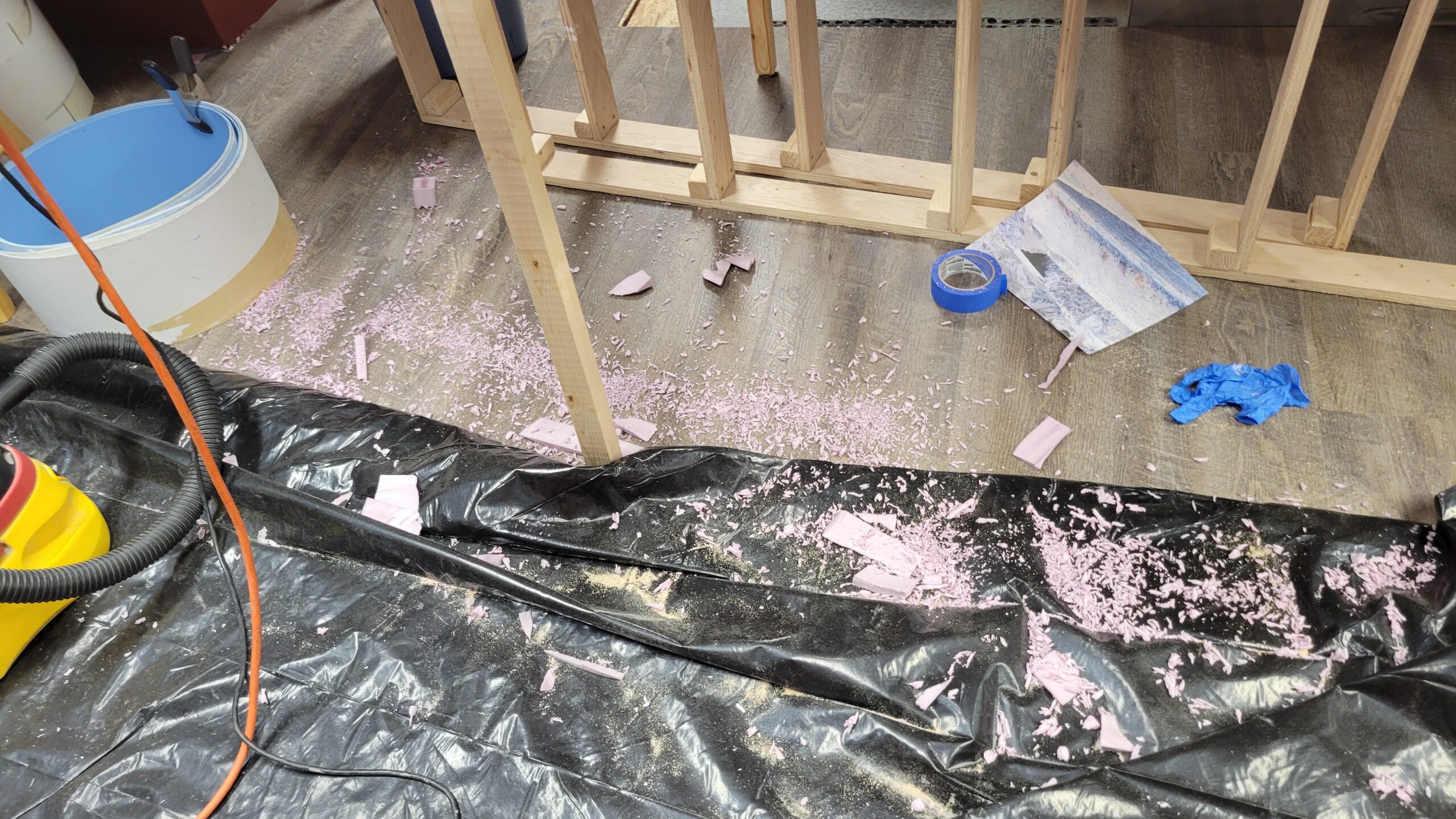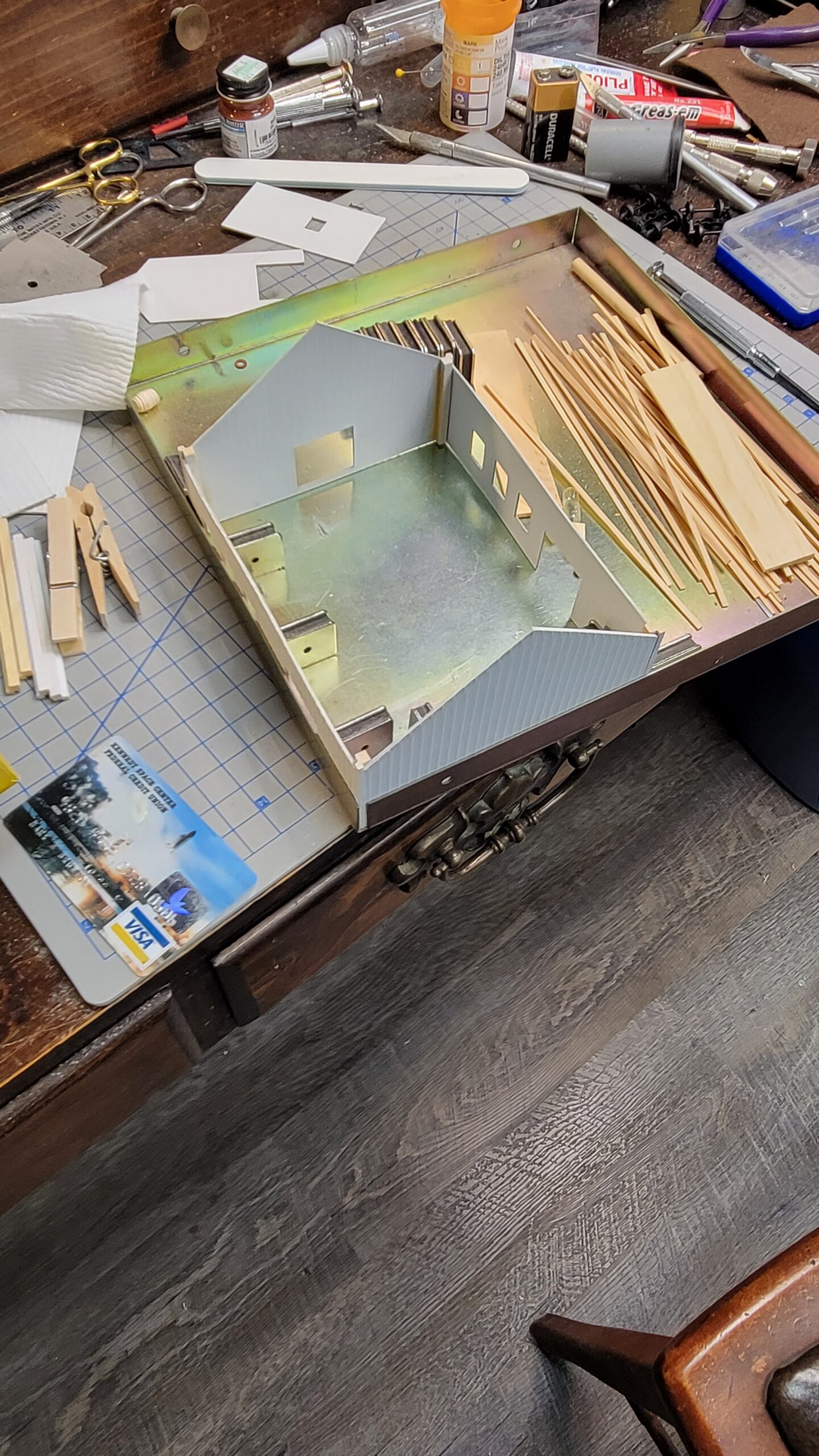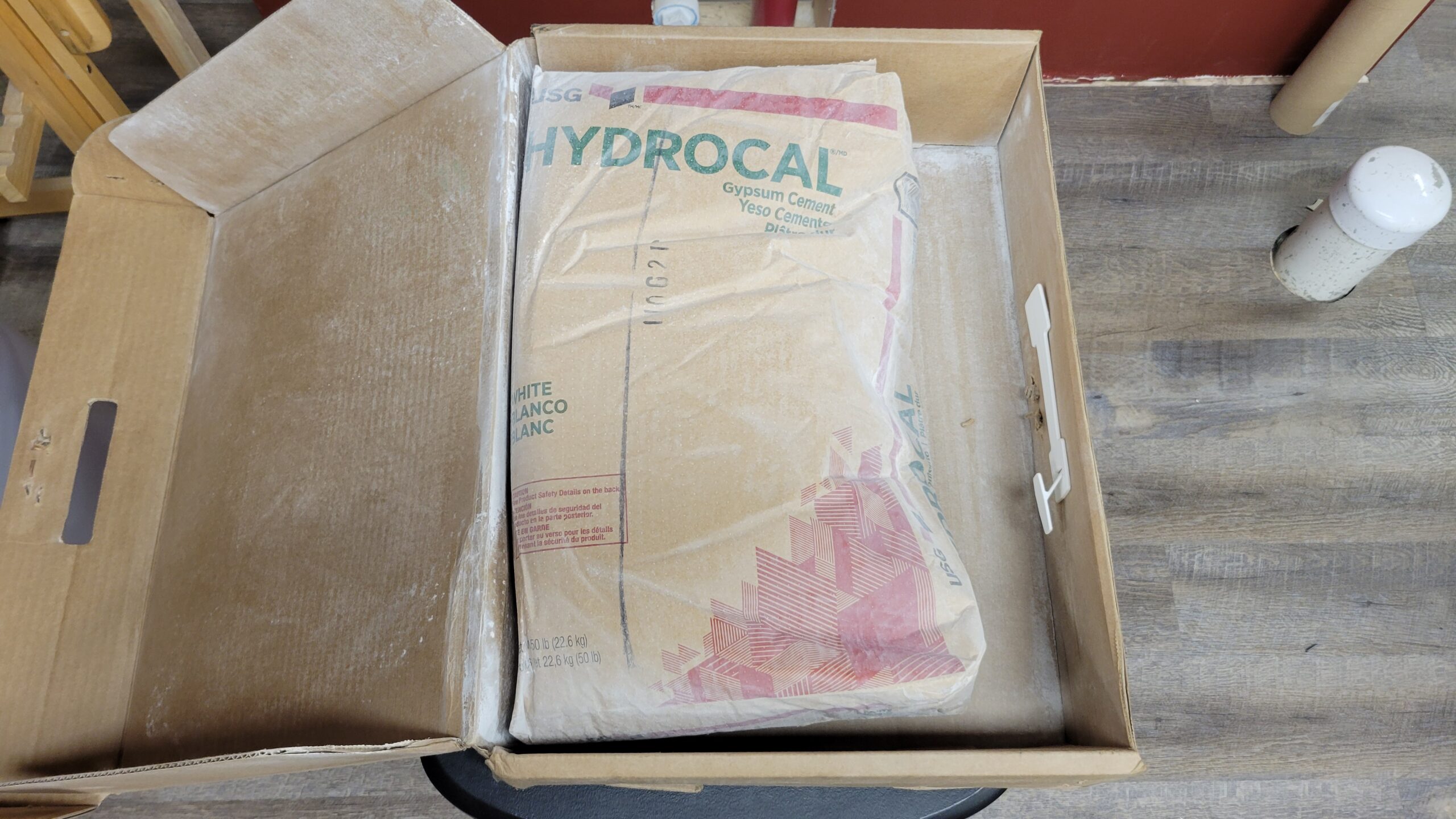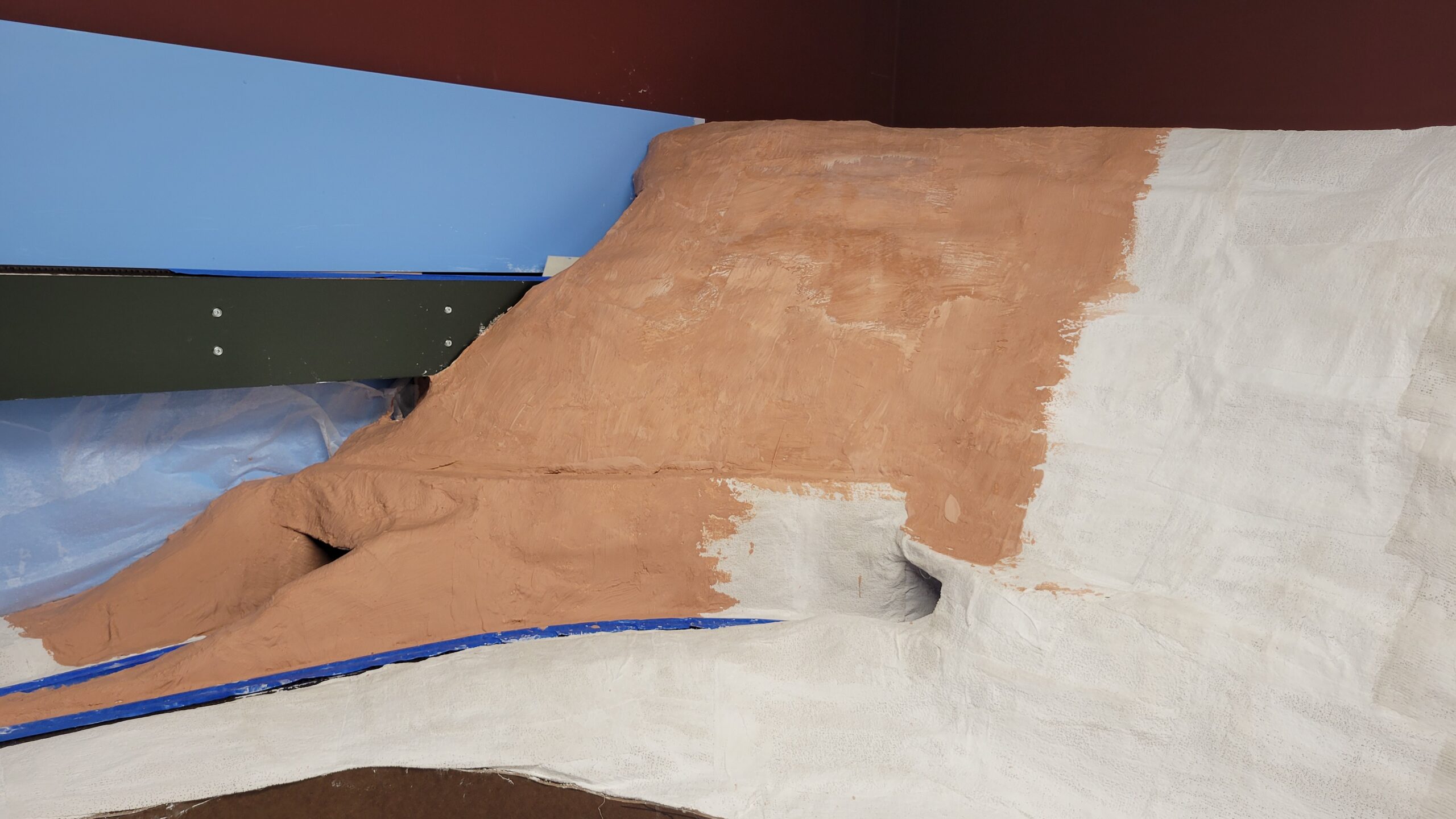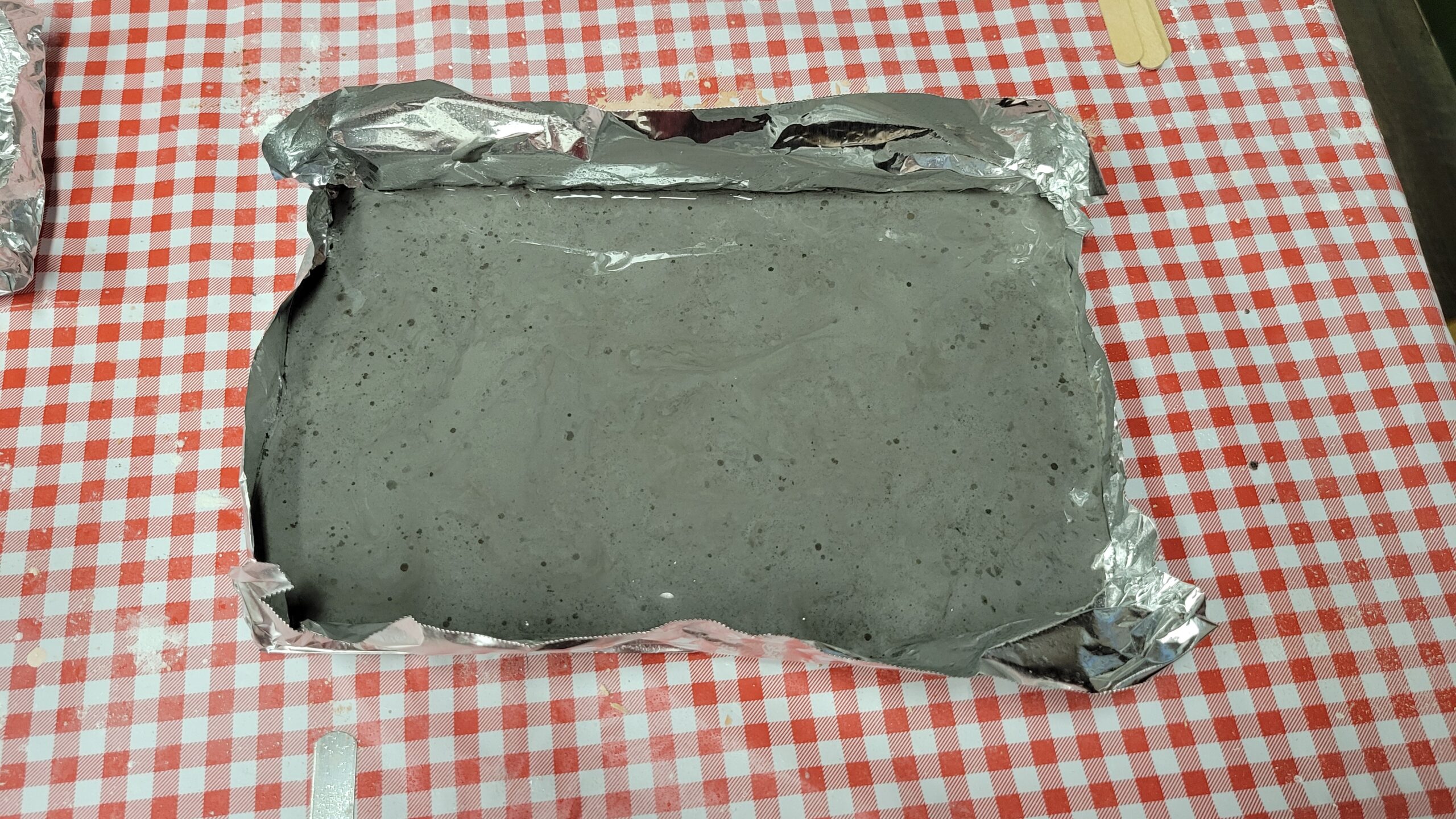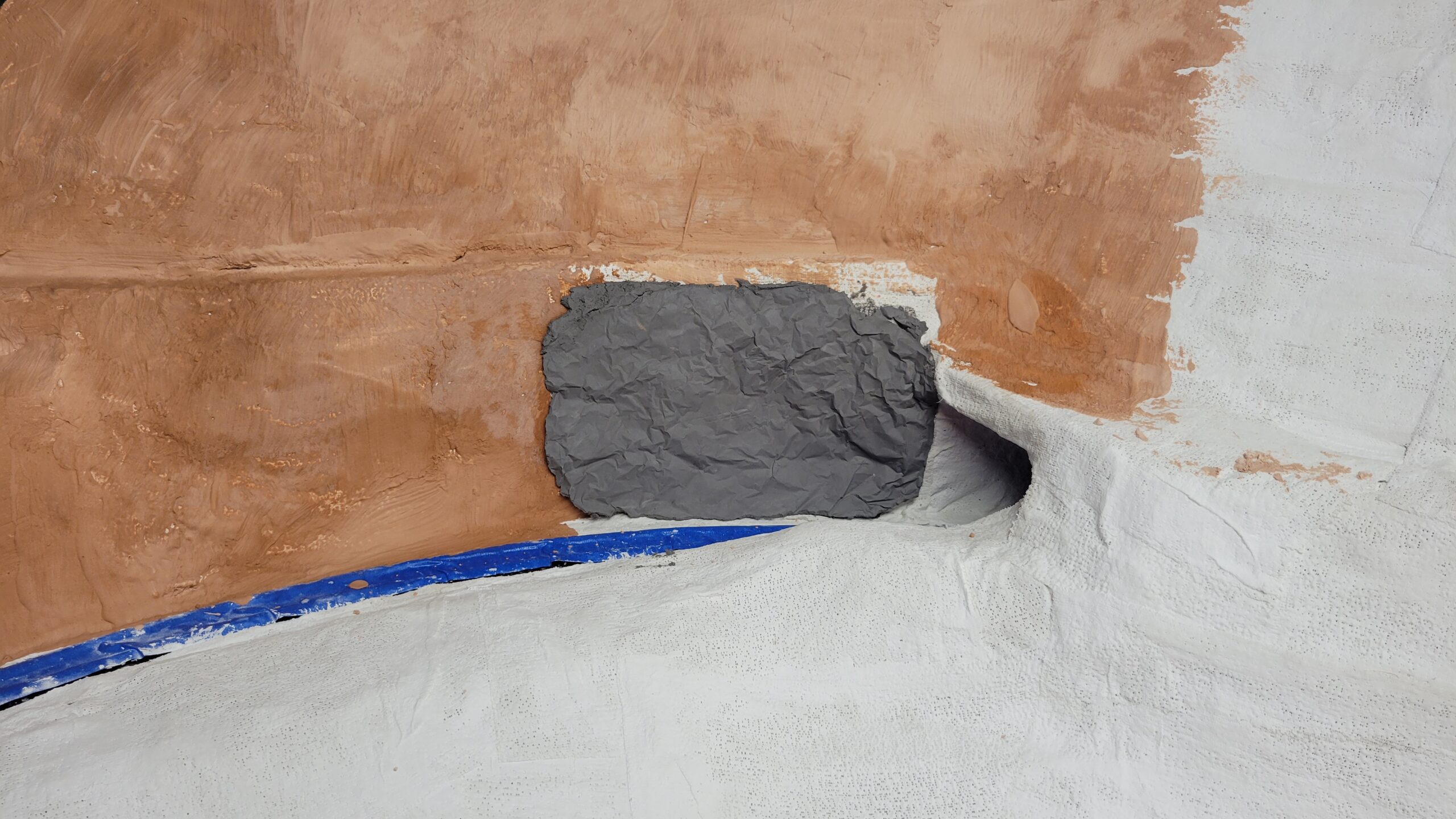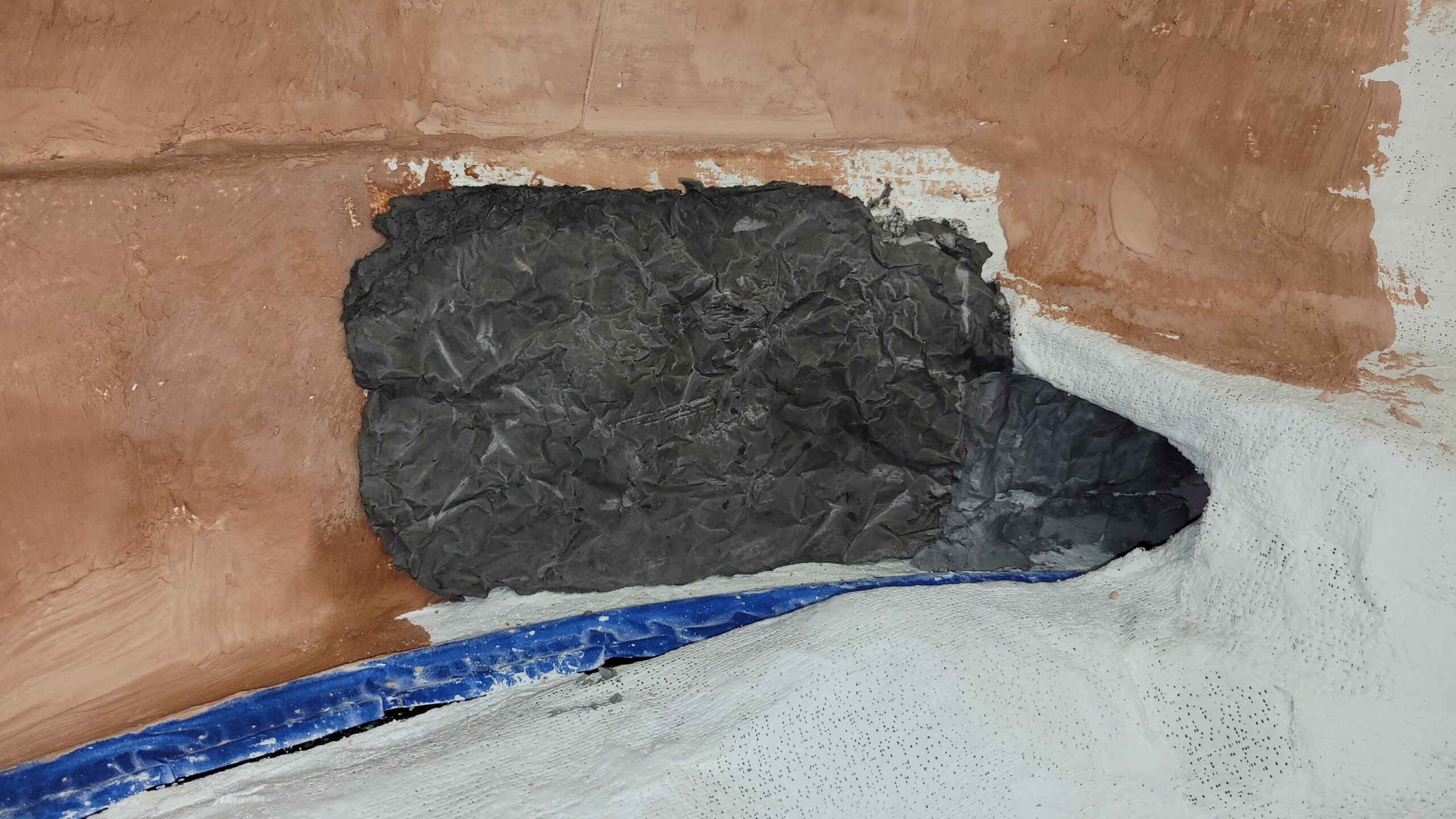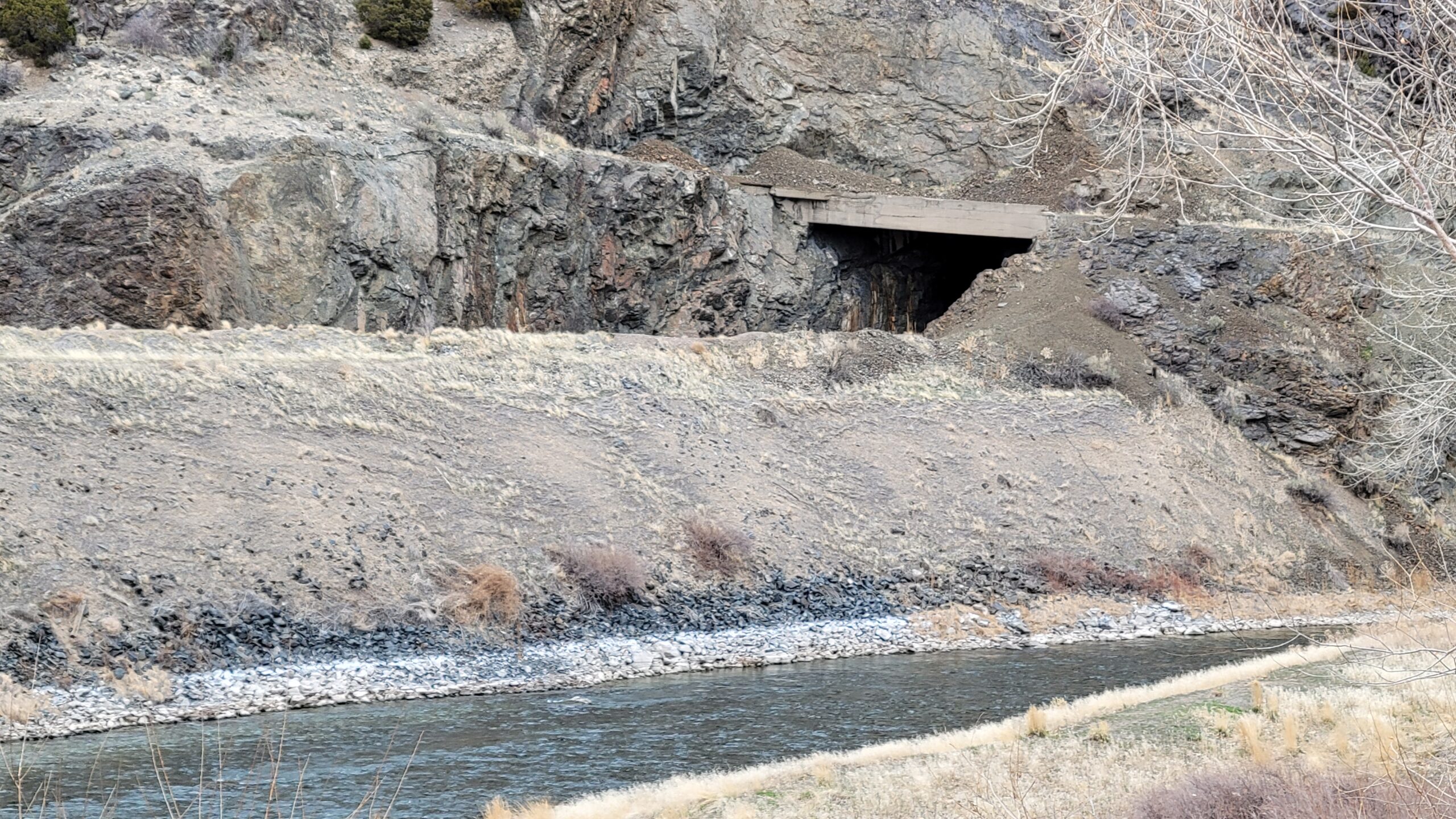Casper Construction Progress Part 2 – 2022 – April through June
8 April 2022
On April 3rd I posted my latest layout update video.
15 April 2022
I did some work at the south end of the Wind River Canyon. I wanted a solid base for the mountainside, since it will extend upwards quite a bit, so I attached 3/4" oak plywood to the benchwork as a foundation for the foam. The oak plywood was left over from the library shelves project, otherwise I would have used the plain old 1/2" pine.

Today I started reassembling a tunnel portal for the canyon I first built nearly 40 years ago(!), when I lived in Kent, Washington. When I moved out of that house, my niece was carrying the tunnel portal, and turned around and banged it smack into a stair railing. The whole thing came apart of course, but I saved all the pieces and now, 35 years later, I'm reassembling it to use on the current layout. It's not quite done yet. The wing wall will be removed, and I still have to reinstall the left hand buttresses.
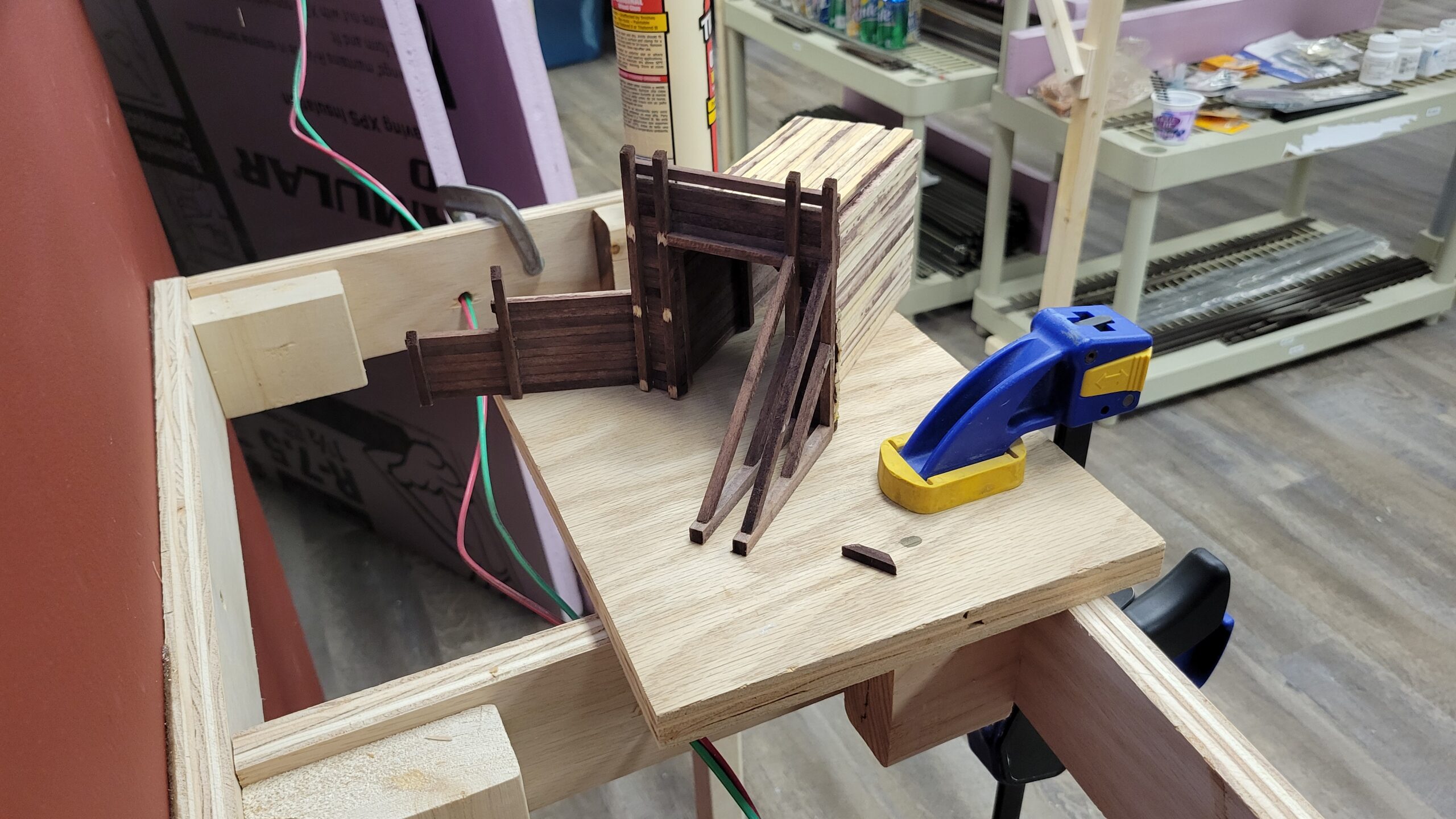
Here's one of the real portals (that the model is supposed to represent) in the Wind River Canyon. All the portals in the canyon are similar. A couple others look more like the one I'm reassembling.
In the early 2000's most of the portals were replaced or significantly reworked with steel, but one or two are still timber construction. This photo is one I took in 1990.

The caboose project is proceeding - slowly. I was painting railing and grabs (all the wire pieces) and installing them as I went. I managed to break my #79 drill bit and discovered I don't have anymore, so I ordered replacements from Micro Mark (really sucks not having a hobby shop around at times). Meanwhile I continued painting the wire parts.

On the 11th I drove over to the canyon and spend several hours traveling through it both ways, stopping frequently to observe and photograph everything I could. I took almost 250 pictures! Here's the north portal of the northernmost tunnel. I'm going to try to do justice to that rock outcropping on the layout.

21 April 2022
At this point I switched over from using Alex Plus caulk to glue the foam together to using low temperature hot glue. It's faster - in about five minutes it's fully cooled and solidified. With the caulk I could do about two layers a day, then I'd have to stop and let the caulk set up for six to eight hours.
The hot glue also makes for a less flexible build.
23 April 2022
8 May 2022
Quite a bit has happened in the last couple of weeks.
Work on Wind River Canyon and the area "west" of Powder River got some work done.
First I used a hot wire foam cutter and a Surform tool to shape the big stack of foam I put together for the canyon. That Surform tool sure makes a lot of little foam crumbles!
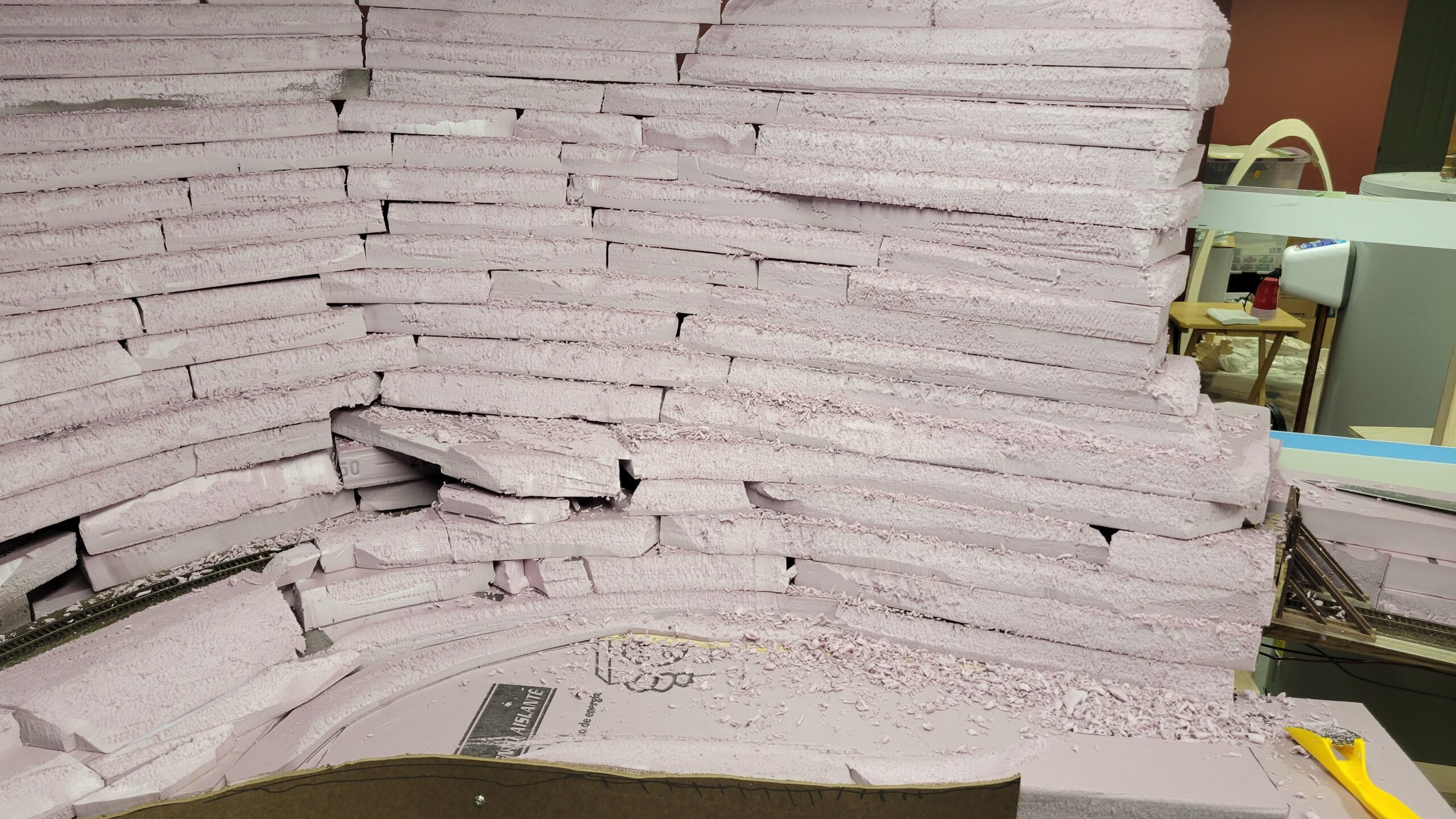
...then moved on into the south end of the canyon. We used up the entire roll of plaster cloth to get to this point.
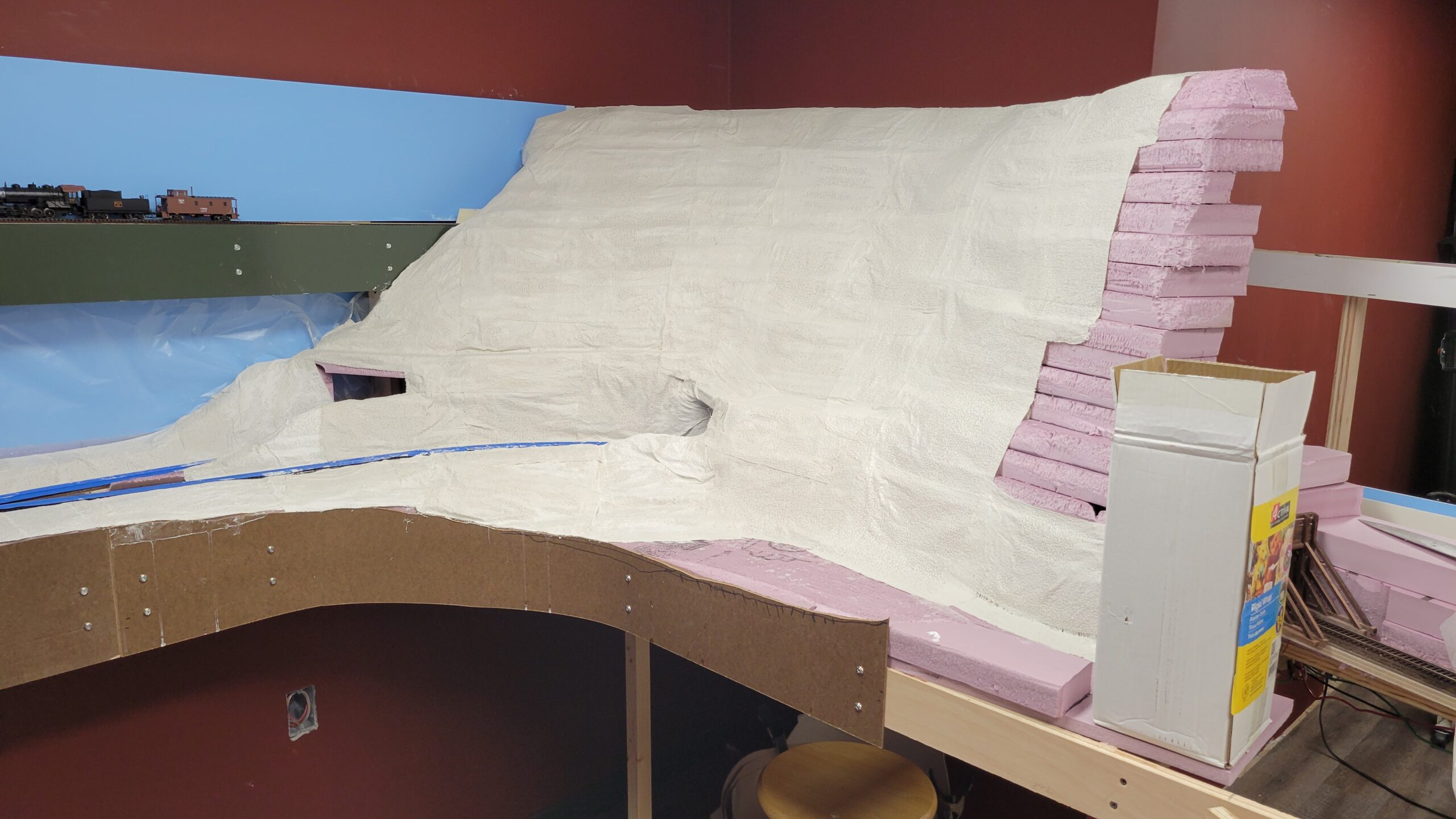
I ordered more plaster cloth from Amazon (Woodland Scenics' small rolls are way too expensive!). Once it arrives we'll add a second coat to the area, and I'll arrange it so that the big gaping hole to the left where the CNW line disappears into the mountain isn't so obvious.
Meanwhile I started working on the second CNW waycar. This one went a bit quicker than the first because I had learned how to mount the NCE Light It, I knew the best approach to soldering the wiring, installing the power pickup trucks and all that. Here the wiring is complete and all tucked into place ready for the roof. It's April 29th.
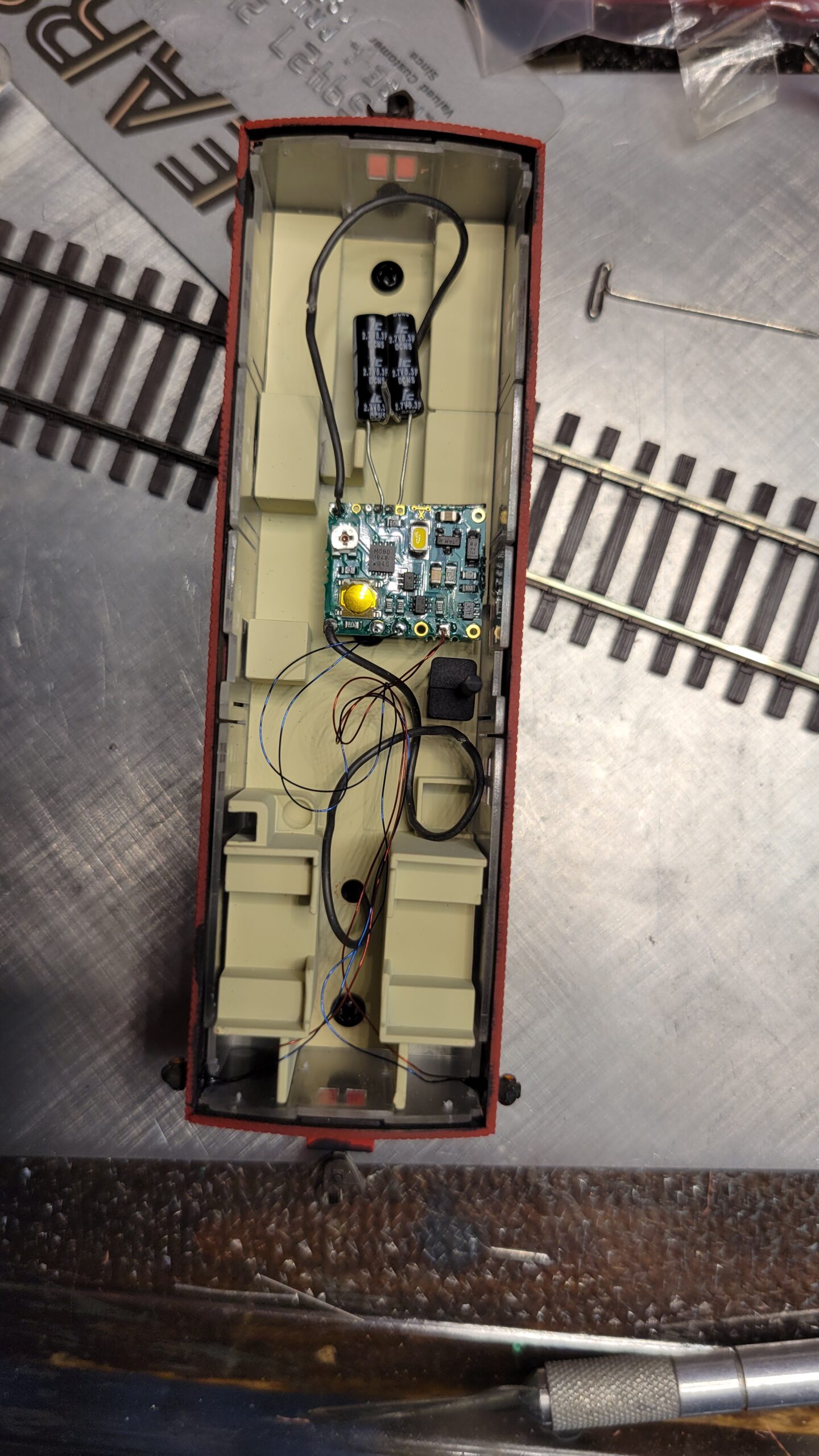
On 2 May I extended the throttle buss through the Douglas benchwork all to way to a connection at the end near my workbench. Now I can test DCC equipment at the workbench with direct connections both to the power buss and the throttle buss. I have the NCE radio throttles, but their performance is spotty.
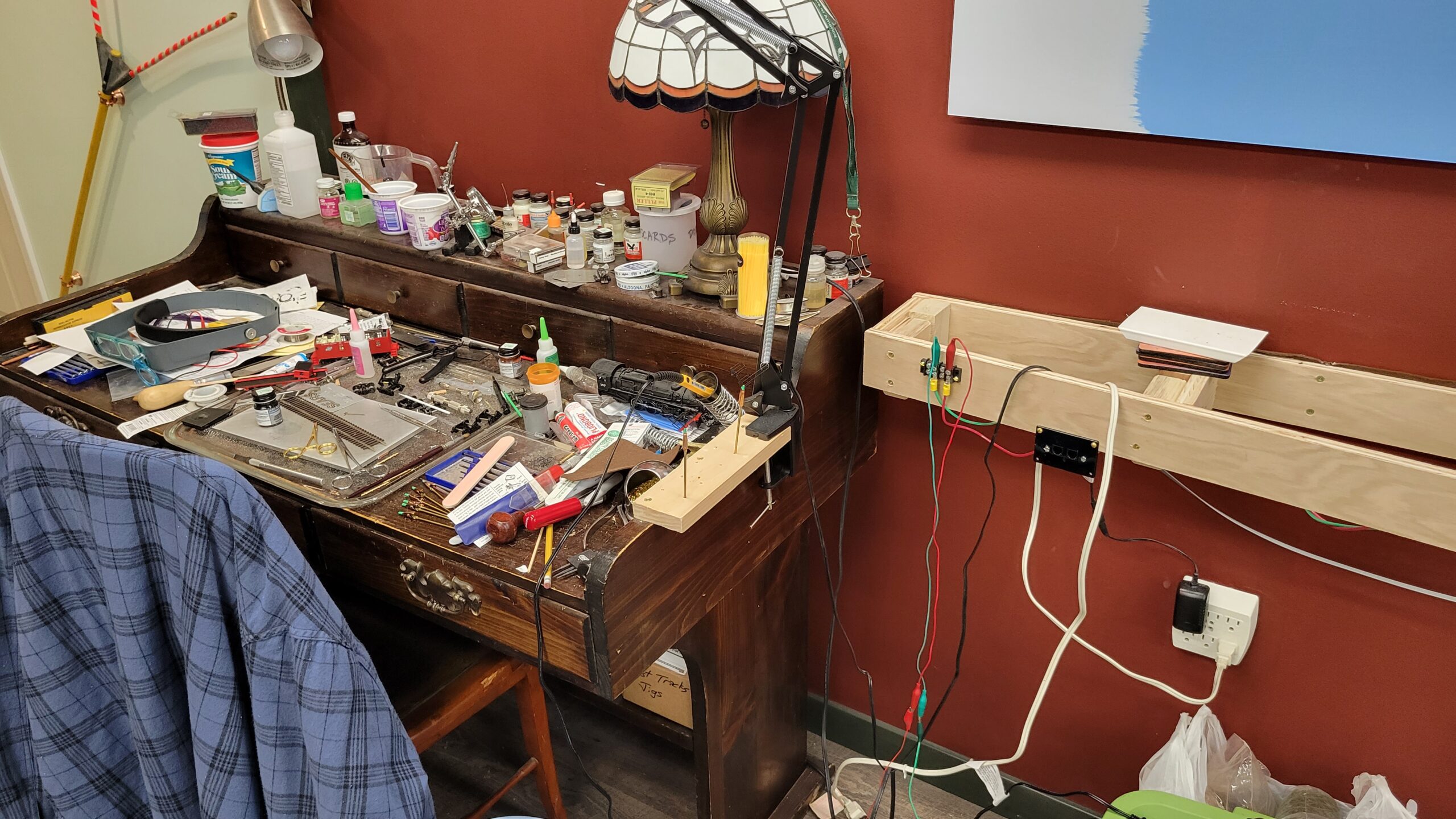
On 3 May I posted my latest layout update video:
On 5 May I started building the first section of benchwork for the Worland / Greybull peninsula. I started with one of the grid sections I brought with me from the New Jersey layout, reworking it to the configuration I needed. It was 96 X 42 inches, and I narrowed that to about 33 inches. Then, to provide clearance around the wall that hides the furnace and hot water heater, I cut off one corner. It's now been installed and looks like this:
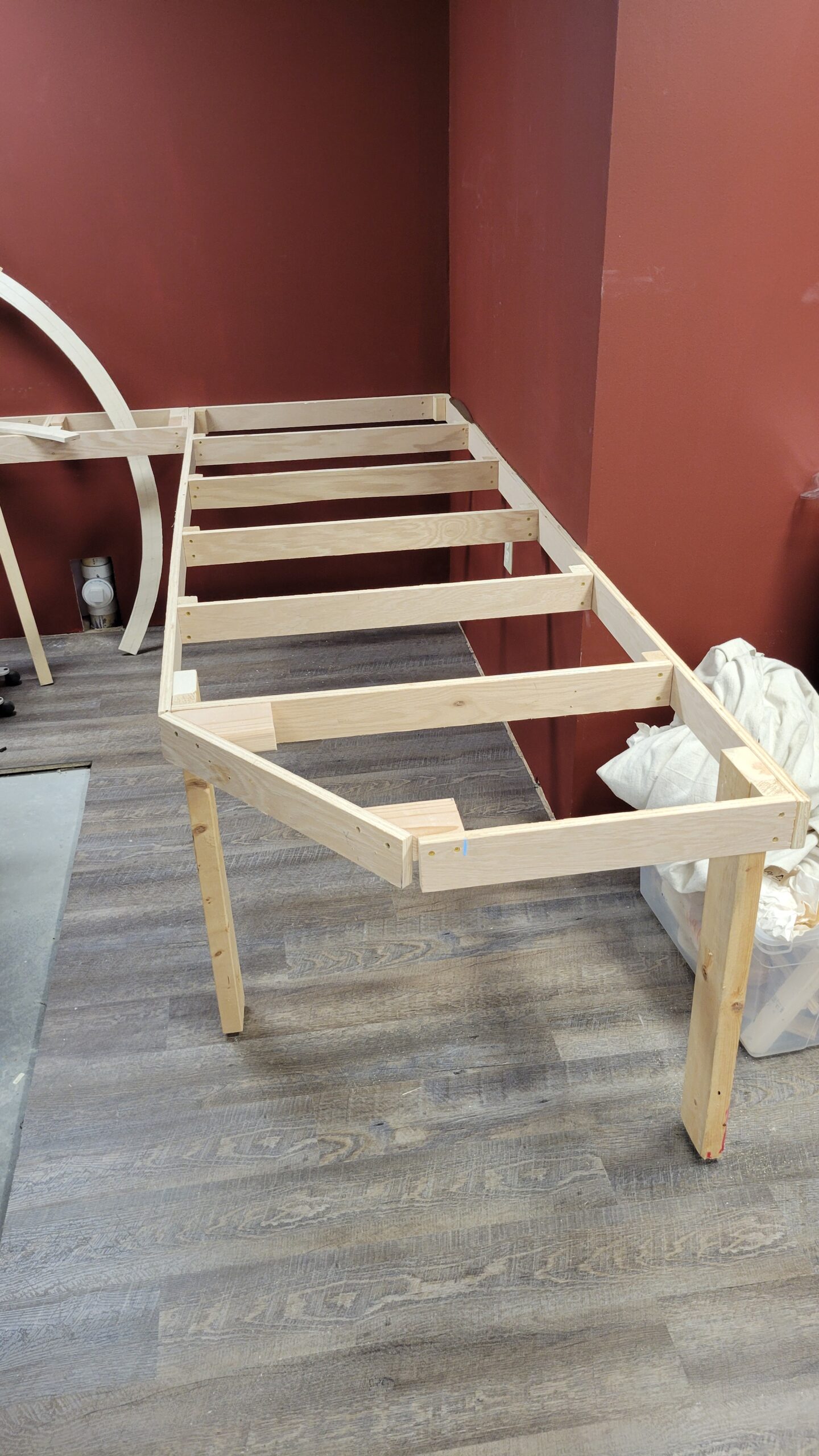 The benchwork in this area is so low to allow room under the towns of Worland and Greybull for the hidden part of the Cody branch underneath.
The benchwork in this area is so low to allow room under the towns of Worland and Greybull for the hidden part of the Cody branch underneath.
17 May 2022
I've spent nearly all of my modeling time on the canyon for the past couple of weeks. The next few shots show the progress from the 10th through today.
Here, on the 10th, the wall behind the tracks north of the first tunnel, Tunnel 5 (called Black Tunnel, presumably because of the rock color, by BNSF train crews), is being stacked. To the right, Tunnel 4 is being framed in.

25 May 2022
8 June 2022
On 3 June I uploaded my latest layout update video:
Today I started applying it to the Wind River canyon.
First I put the contents of the bag into several containers that should keep it fresh longer than the open bag would:
Then I mixed up my first batch and applied it to the side of the mountain at the far south end of the canyon. Looks like it came out okay, and it seems to be drying well. The Tempera pigment didn't impact the setting of the plaster at all, from what I can tell. Once it's cured for a couple days, I'll know for sure.
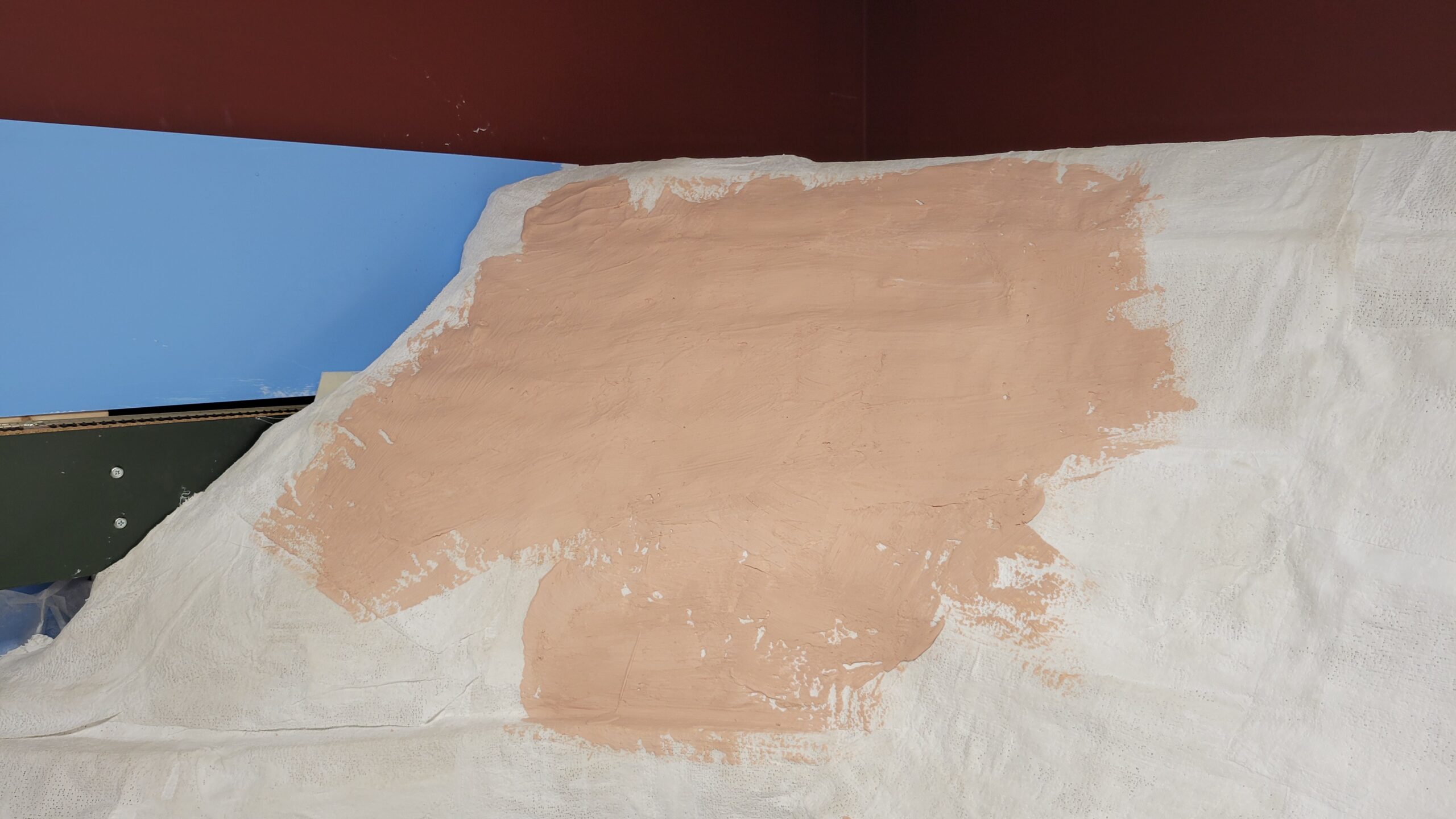
14 June 2022
After waiting nearly a month, I received my WFD-31 Wifi port for my NCE system from WifiTrax in Australia. It sat in US Customs for two weeks in Chicago before it was finally released for delivery.
It arrived June 10th and took all of about 15 minutes to install (and most of that time was spent reading the instructions!). It worked first try! This is really an excellent product. The NCE radio system is spotty in my basement, with many dropped keystrokes and a couple of just plain dead spots around the room. I could have bought several repeaters (at over $100 a pop) and placed them around the room to (hopefully) solve the radio problems, then buy additional NCE radio throttles (CAB06's at around $180 each), or one WFD-31 at $140 delivered and TCS UWT-50 throttles at $200 each. But I can buy the TCS Throttles over time, and meanwhile visiting operators can run trains on my layout on their cellphones using Engine Driver or Withrottle (depending on the phone type). While I think the NCE product line is excellent quality, I opted for the ultra-reliability of the Wifi adapter for wireless throttle operation.
Here's the WFD-31 installed and operating in place of the UTP in Thermopolis. It's a direct replacement plug-in for the UTP, with the only tricky part being drilling to enlarge the LED hole in the mounting plate.

After a bit of work with a utility knife and my big serrated foam knife, I trimmed the side of the canyon into this. A bit of added plaster will patch the wound and I'll have a road that runs straight from the wall over the portal. I'll have the repair completed in the next few days.
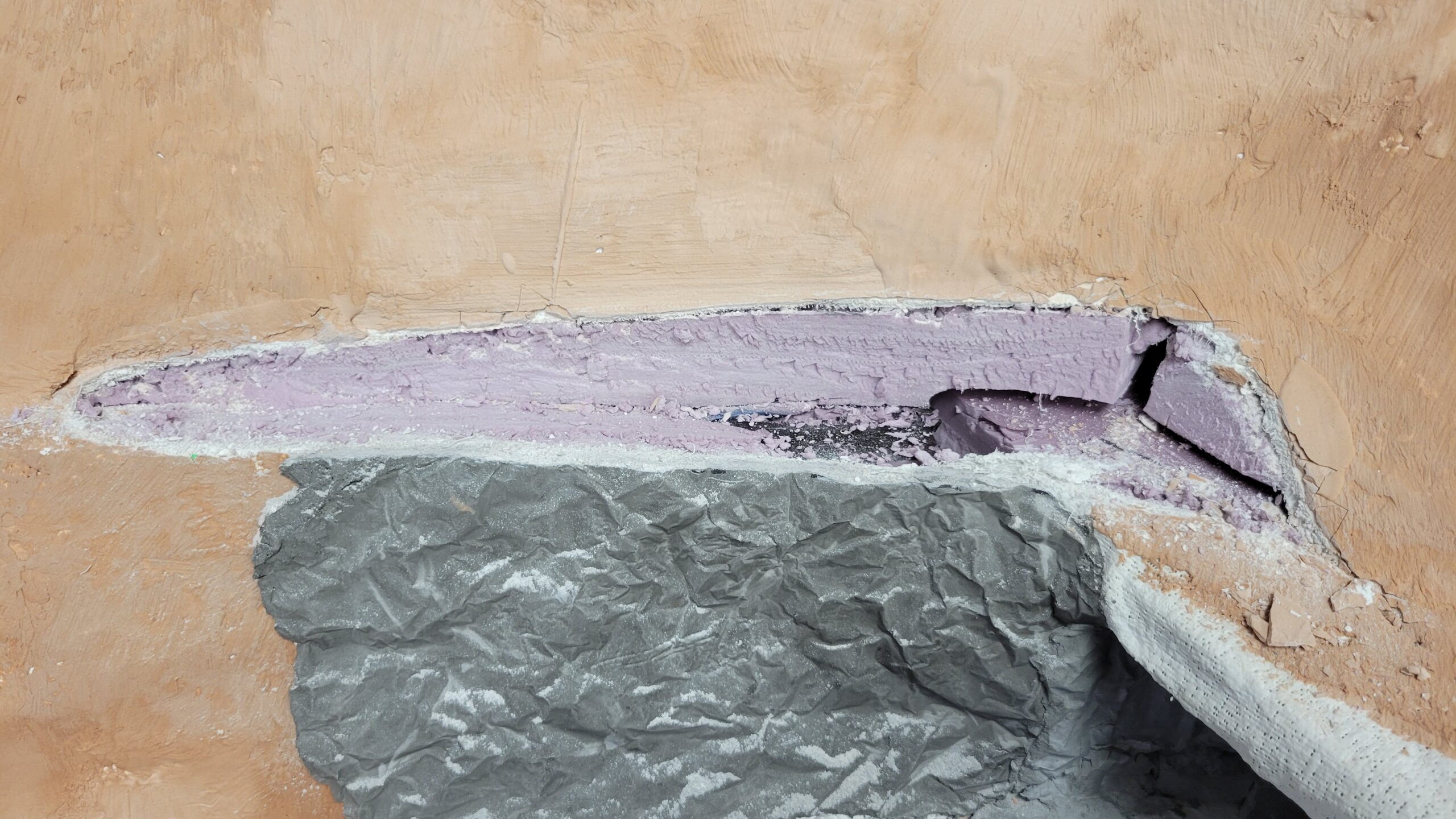 The road over the portal ran to the first Boysen dam just a bit north of this tunnel portal. That dam was removed in about 1948, and the road has been unused since then. Most of the talus that has accumulated on the road wasn't there in the 1930's and 40's, so it won't be there on my layout either. The road will be unpaved but in good shape. On the layout it will peter out to the right of the portal. I won't be modeling the old dam on the layout.
The road over the portal ran to the first Boysen dam just a bit north of this tunnel portal. That dam was removed in about 1948, and the road has been unused since then. Most of the talus that has accumulated on the road wasn't there in the 1930's and 40's, so it won't be there on my layout either. The road will be unpaved but in good shape. On the layout it will peter out to the right of the portal. I won't be modeling the old dam on the layout.






